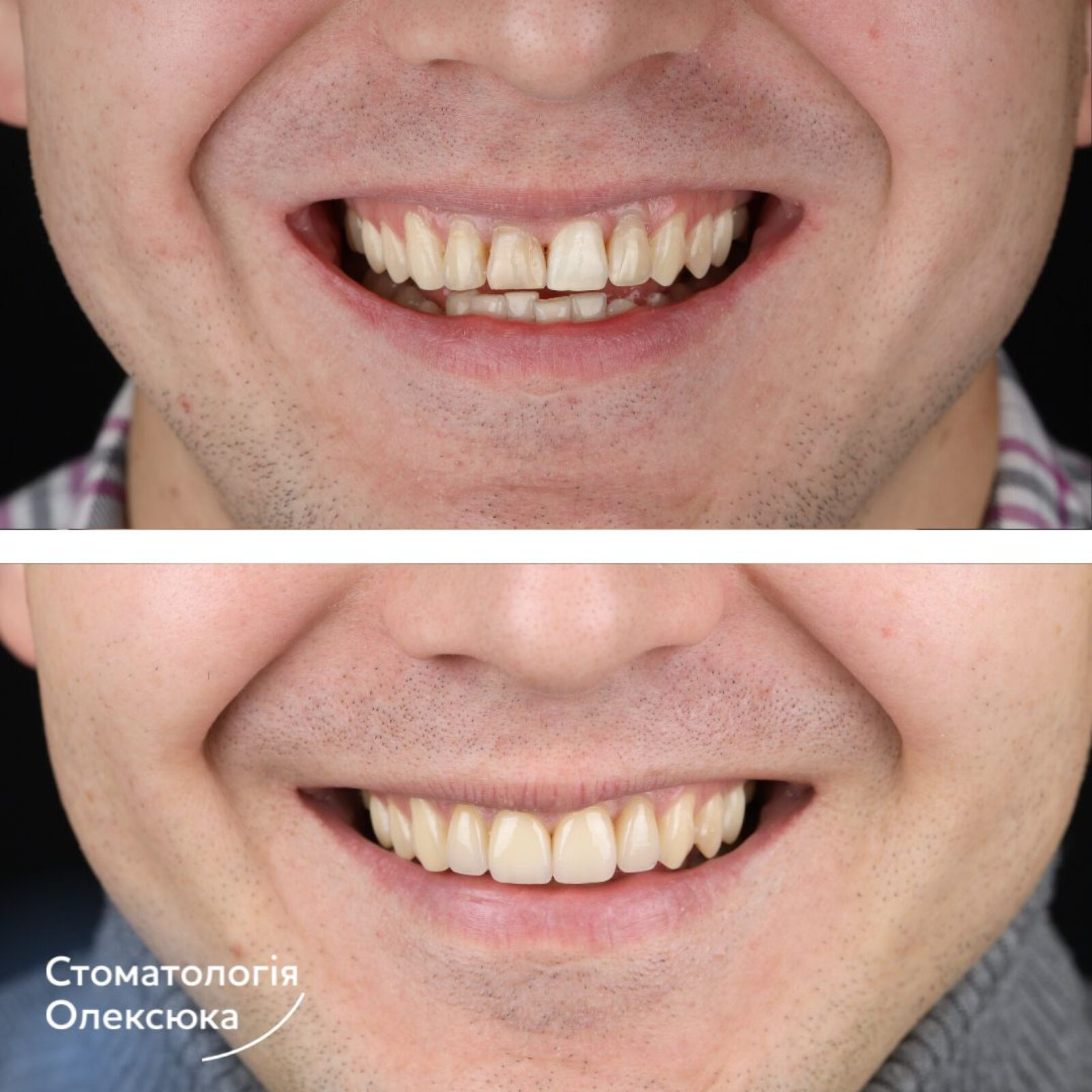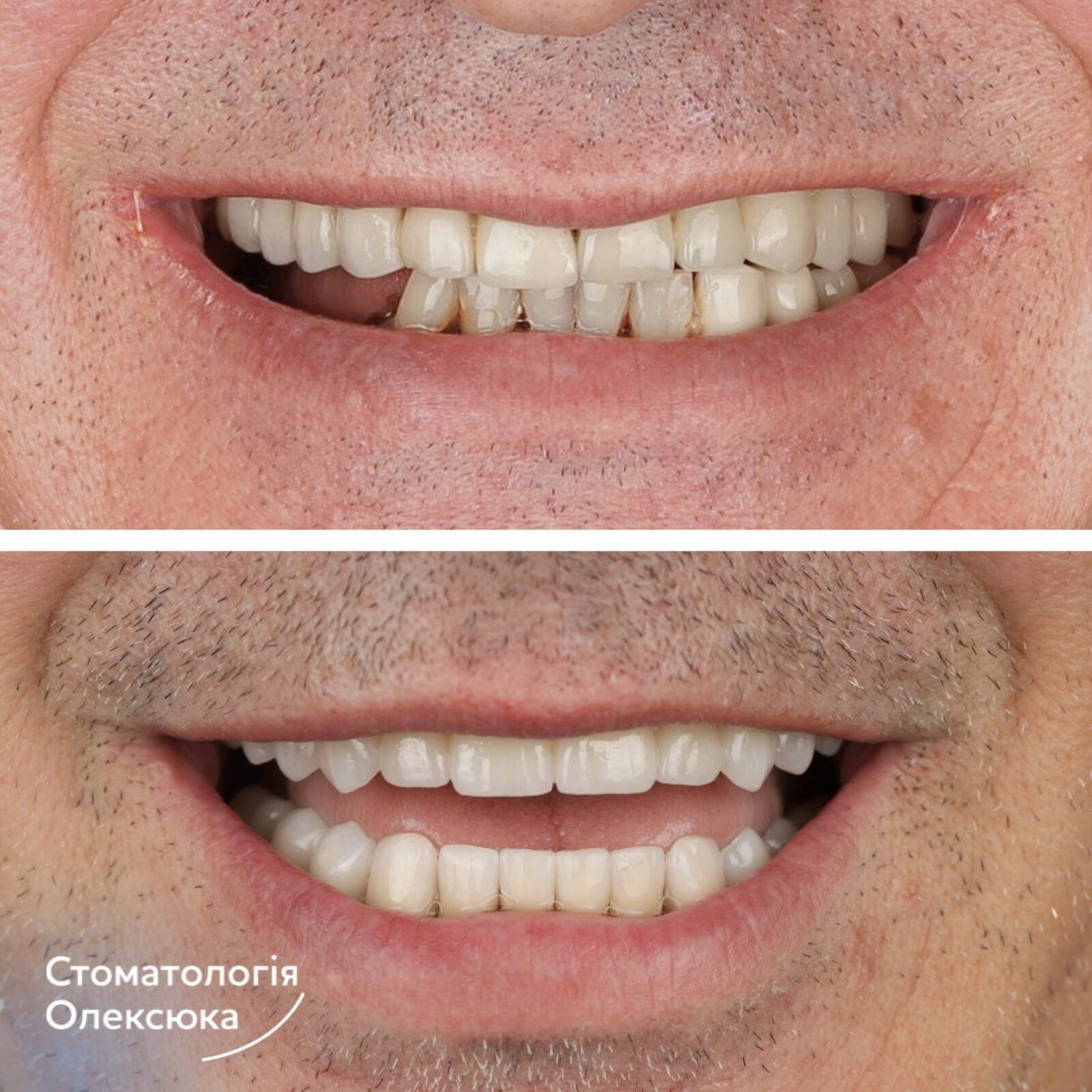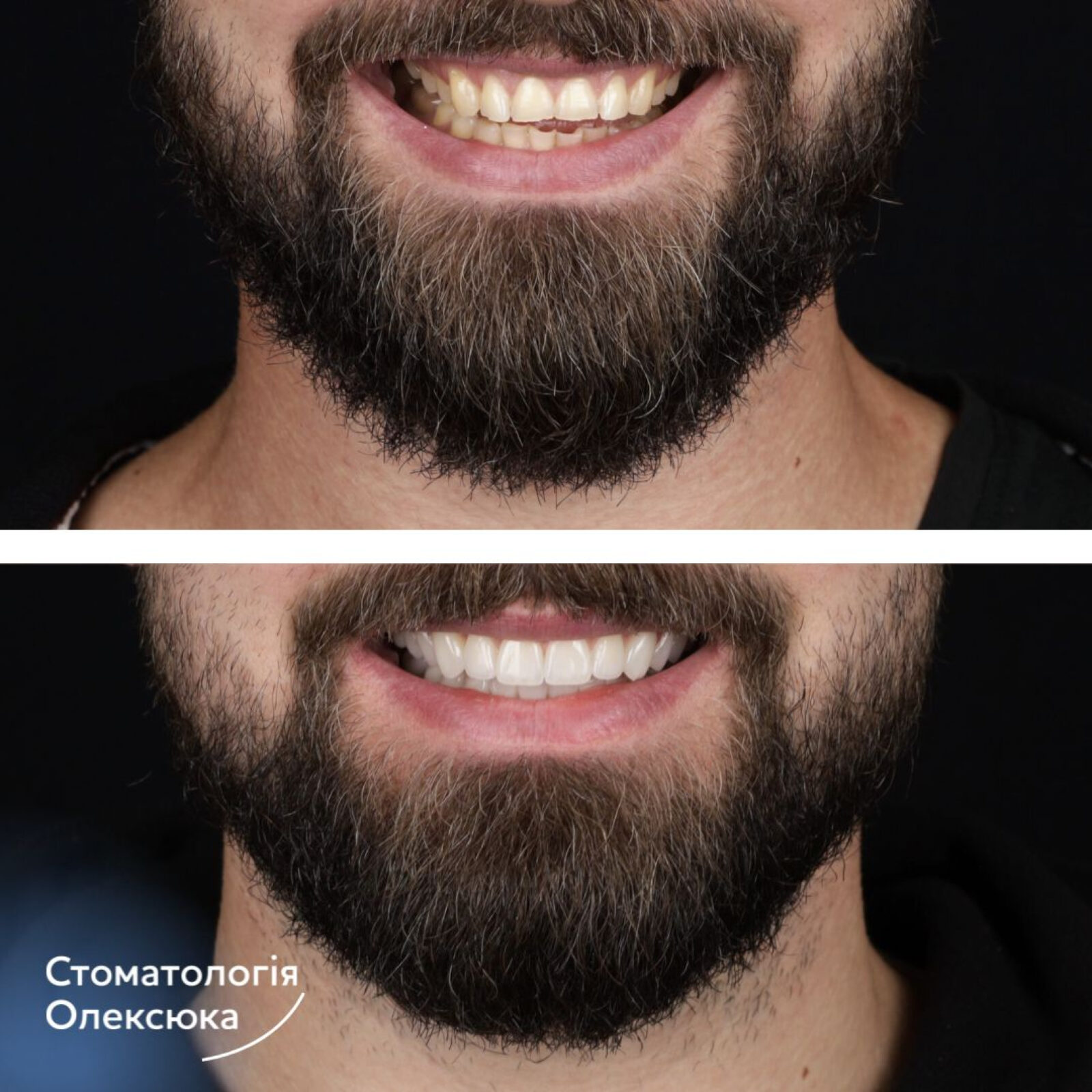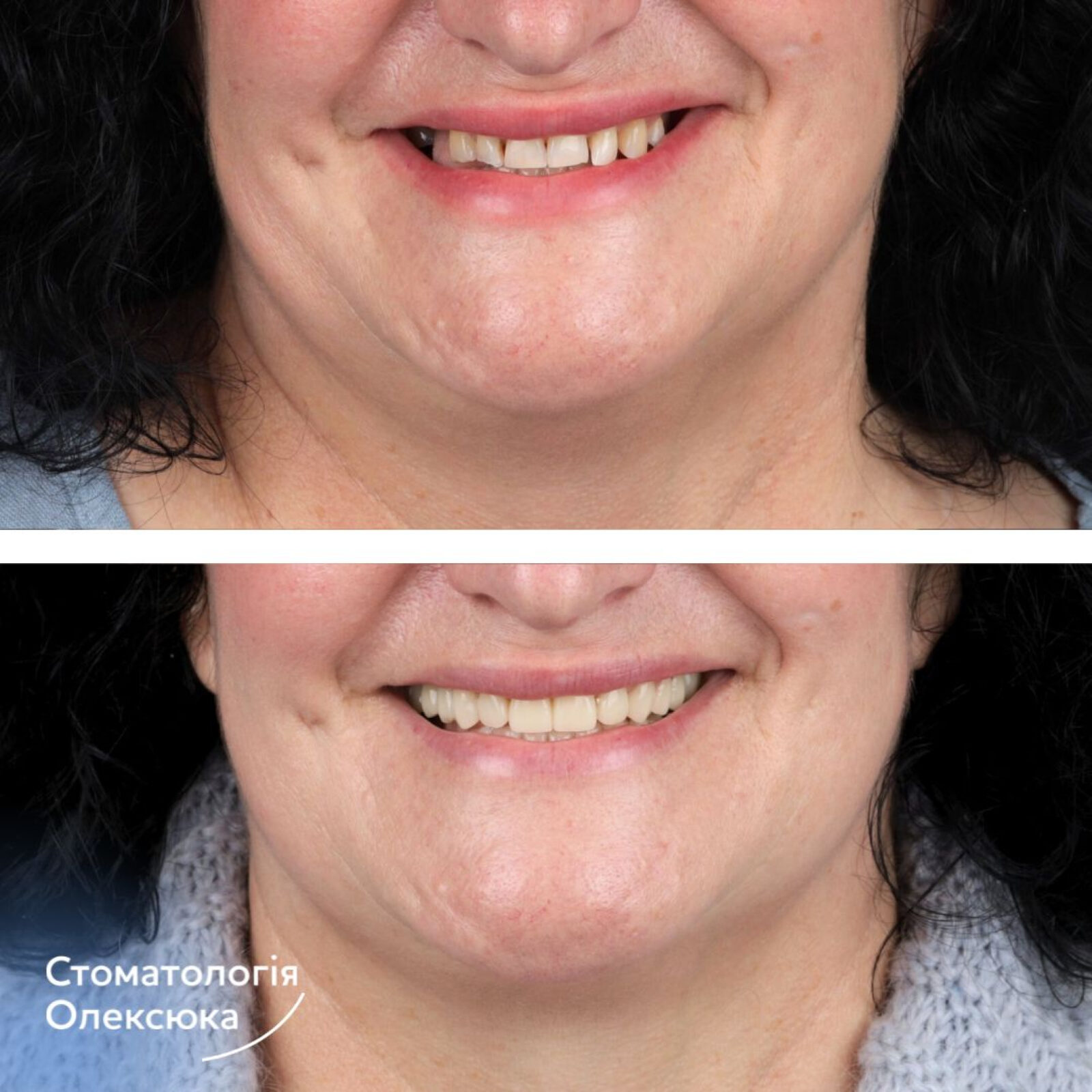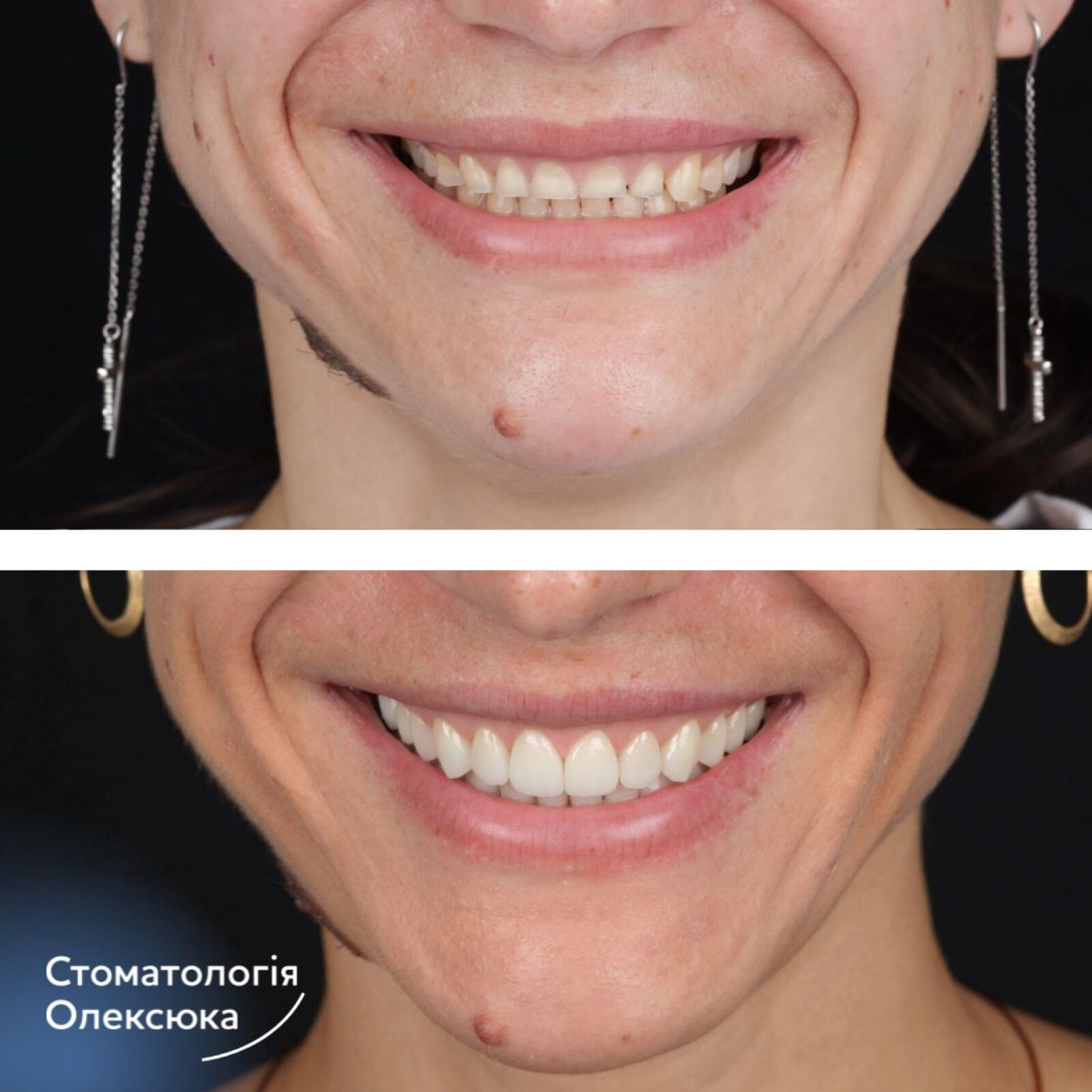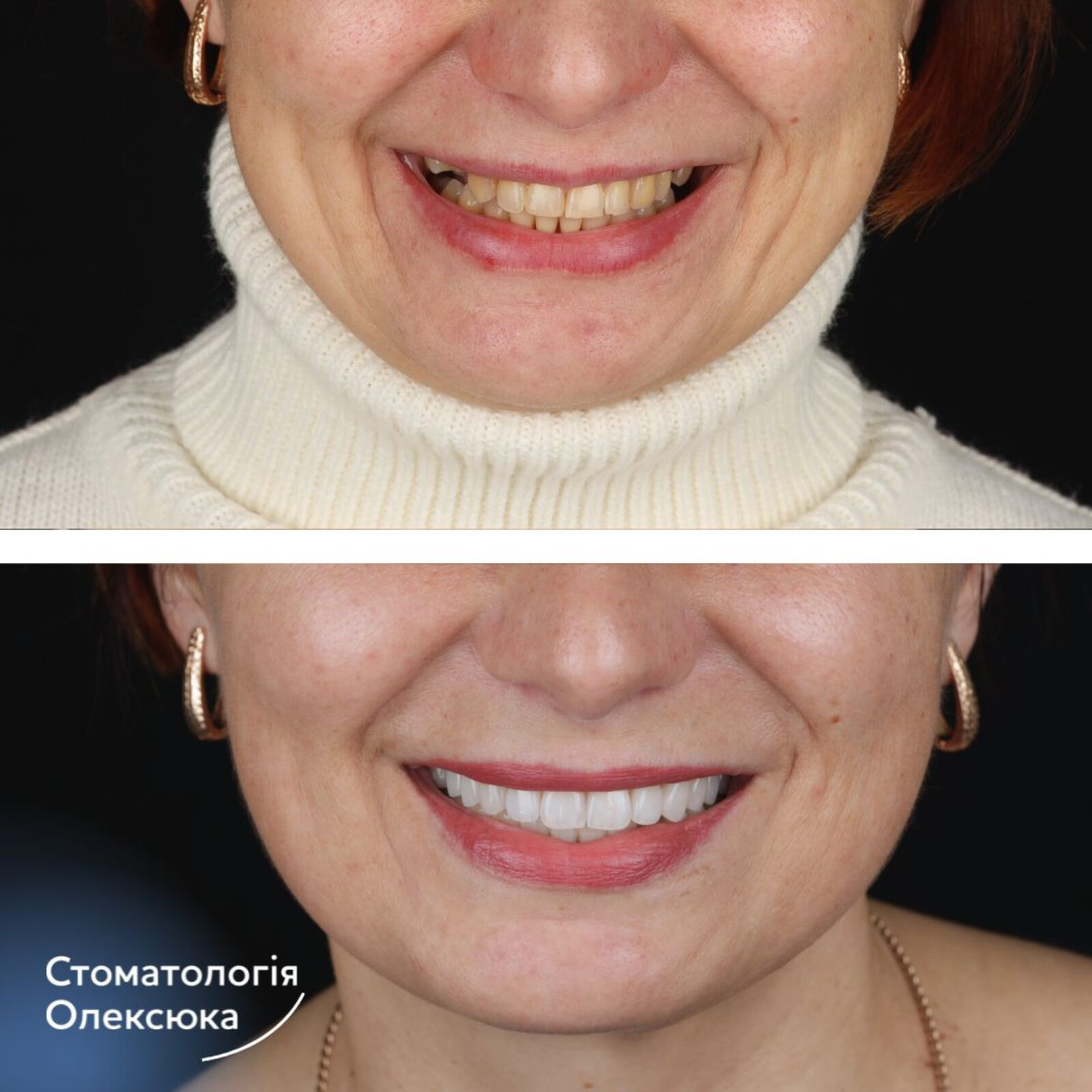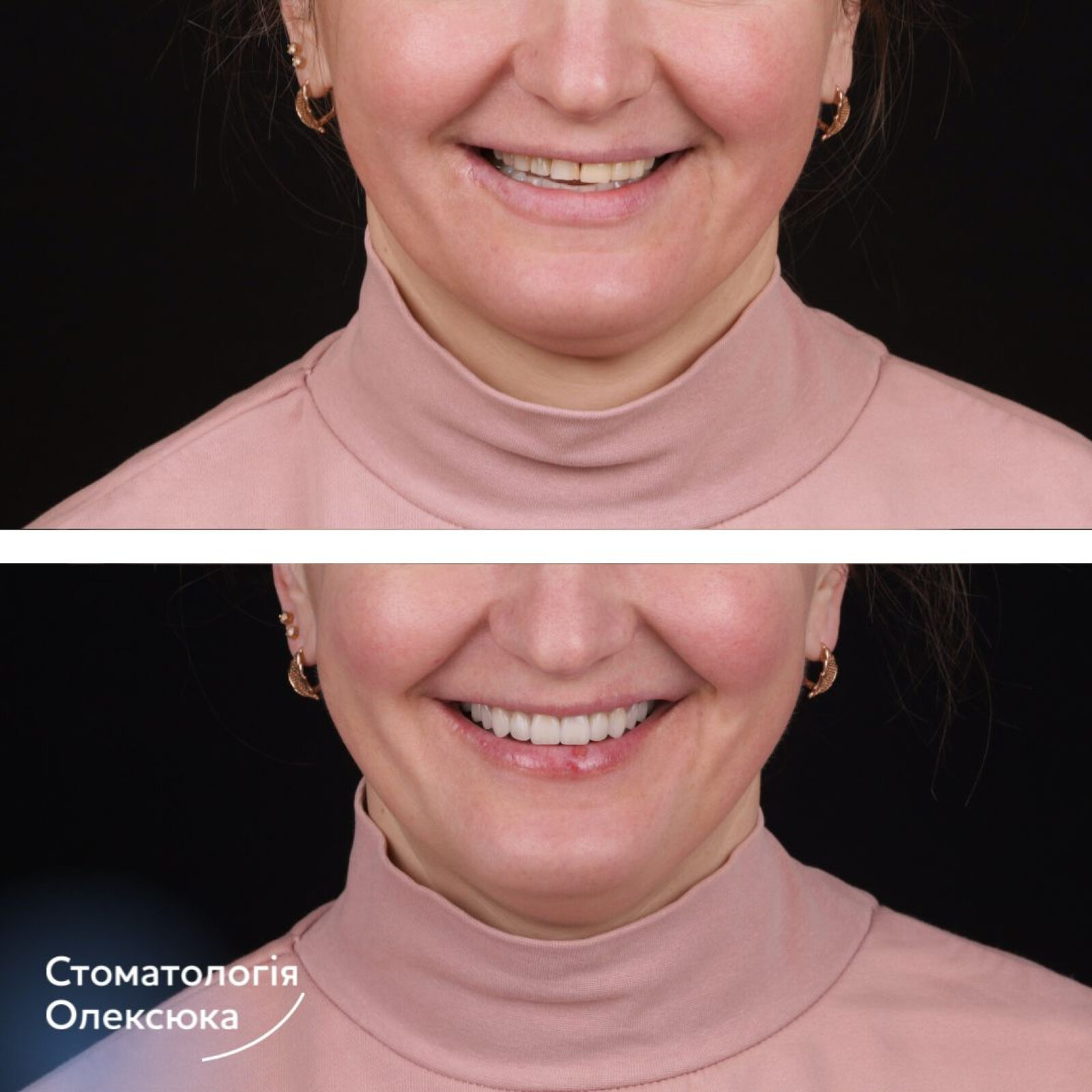Treatment of tooth canals (endodontics)
Caries is the cause of almost all dental problems, and root canal disease is no exception.
As it has been mentioned many times before, complicated caries is when carious processes go so deep that the tooth pulp, or, as our patients are used to saying, the nerve, is affected. "Big teeth" have several canals; in the central teeth, there are usually one or two.
If you do not seek qualified help in time, you will face serious complications. Granulomas and fluxes may form, which will result in tooth extraction.
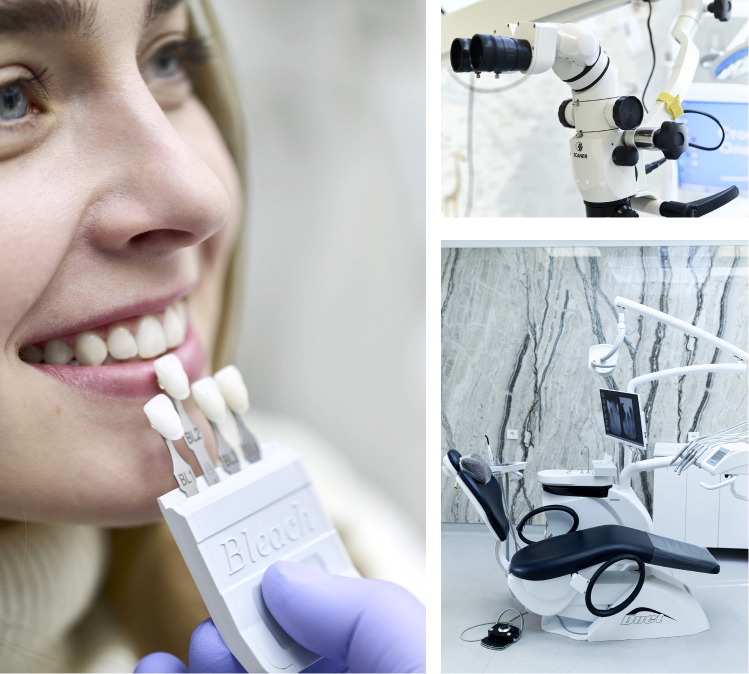
Indications and stages of root canal treatment
We treat tooth canals when a patient comes to us with a significantly damaged tooth. We see the destroyed walls of the tooth, progressive deep caries, which has "eaten" all the hard tissues above the level of the nerve. Treatment of the pulp can also be carried out for orthopedic indications, or carried out for prosthetics.
In order to relieve inflammation in the root canal, the doctor needs to remove the infected pulp tissue, rinse and dry the canal thoroughly. It is impossible to completely remove the infection, because a large main root canal has a large number of branches (a system of micro tubules), which are almost impossible to clean and process mechanically. Therefore, we must reliably isolate them from the surrounding tissues. The quality of such treatment depends not only on the professional knowledge and skills of the endodontist, but also on the materials and equipment used during treatment.
A lot of auxiliary instruments and devices are used to make the pulp treatment procedure of the highest quality. The very first device is an assistant that allows you to determine the length of the root canal is an apex locator (as soon as the root needle of the device reaches the end, we hear a warning signal that allows us to understand that we have passed the tubules). It is important to remember that the apex locator may not show completely accurate data.
Using a special thin K-file instrument and an X-ray, we determine the exact length of the pulp. Since the K-file is X-ray contrast, the endodontist can see perfectly well whether the tip of this instrument has reached the apex of the root or not.
The tubules are given a special taper with the help of tools. They are treated mechanically and medically (with antiseptics). Ultrasound is used to get them into all microtubules and branches. The use of this technique allows you to cure root canal infection qualitatively and without complications. At the end of the treatment, the canal is filled.
Tooth restoration after root canal treatment
After performing the above steps, the tooth is restored from above. It all depends on how much the tooth is damaged. Accordingly: if the teeth are less than half destroyed, we restore them by filling; if the tooth is destroyed by more than half, we go through orthopedic stages of tooth restoration
In conclusion, we can say that the whole procedure of pulp treatment in dentistry "Oleksiuk" is PAINLESS and inexpensive! Our doctor - endodontist Ivan Yakymchuk - has deep knowledge and experience in edodontics, and has great patience.

Prices.
- Consultation 500 UAH
- Restoration of cervical defects of teeth from 1100 UAH
- Artistic tooth restoration (Curaray, Asteria) from 2200 UAH
- Endodontics of one root canal from 2200 UAH
- Endo primary : - premolar from 3200 UAH
- Endo secondary : - incisor from 3400 UAH
Make an appointment!
We will call you back as soon as possible to clarify the details of the appointment. If you have any questions, our manager will answer them
Tooth-preserving operations - we will save your teeth.
Dentistry is essential for maintaining strong and beautiful teeth. There are cases when endodontic treatment does not help, so it is necessary to perform tooth-preserving operations. They can prevent diseases and restore a healthy appearance to your teeth.
How to prevent diseases of the teeth and gums?
Experts recommend listening to advice that will protect you from any type of surgery:
- Before brushing, be sure to floss with a special flosser. Carefully clean any free space between the teeth.
- Don't forget to brush your tongue, gums, and the inside of your cheeks.
- It is necessary to carry out the cleaning procedure in the morning and evening, because bacteria multiply every 12 hours.
- It is forbidden to drink a lot of strong tea and coffee, as these products stain the enamel.
- The oral cavity should be cleaned after every meal.
Please note! It is necessary to visit the dentist at least twice a year.
Resection of the apex of the tooth root
Tooth root resection is an operation to remove the infected area of the tooth that cannot be treated with conventional treatment. Root apex resection is performed on no more than one third of the tooth.
At the beginning of the operation, the dentist makes an incision in the gum at the site of the lesion. The focus of the infection is removed through the incision. The top of the root is removed, and now the filling begins from the inside. To inject a drug that activates and accelerates the regeneration process, an injection is made into the wound. Then the incision in the gum is sutured.
Please note! After the operation, the tooth continues to function normally.Prices for tooth root resection depend on the condition of your teeth. You can find the price list on our website.
Tooth hemisection.
If there is an infection in the root area that cannot be eliminated by therapeutic treatment, then hemisection is performed. The infected root is removed from the adjacent crown part of the tooth, and the rest of the root, which is healthy and subject to treatment, remains.
The operation is as follows:
- The inflamed bundle is removed and the canals are filled.
- Part of the crown and root are separated - a thin layer of tooth enamel is removed.
- A cavity is formed in the mouth, which is filled with osteoplastic material (necessary for bone tissue restoration).
After all the procedures, the tooth must be given time to heal, after which it can fully perform all its intended functions.
Tooth root amputation
During the procedures, the affected part of the root is removed, while
the crown part remains intact. Such actions help to preserve the functionality and appearance of the tooth. After the operation, you can use this particular tooth as a pore.
Unlike hemisection, the crown part and physiological function of the tooth are preserved.
Attention: If a person has diabetes mellitus or blood diseases, it is contraindicated for him or her to undergo such an operation. Elderly people are also prohibited from undergoing root amputation, but the final decision is made at a consultation with a dentist.
The operation is as follows:
- A small incision is made on the gum.
- Then the surgeon cuts off and extracts the affected root from the socket.
- A cavity is formed, which must be cleaned and then filled with osteoplastic material.
- The flap is put back in place and the wound is sutured.
The operation is necessary in case of tooth root decay or abnormal root canal shape.
What should be the postoperative care?
Care should begin three days after surgery.
Be sure to follow the following procedures:
- Rinse your mouth with warm salted water after every meal;
- analgesics can eliminate pain;
- Drink a vitamin complex;
- take the medications prescribed by your dentist every day;
- do not neglect drugs that can strengthen the immune system.
Several times a day, examine your teeth for any abnormalities. If they are present, contact your dentist immediately.
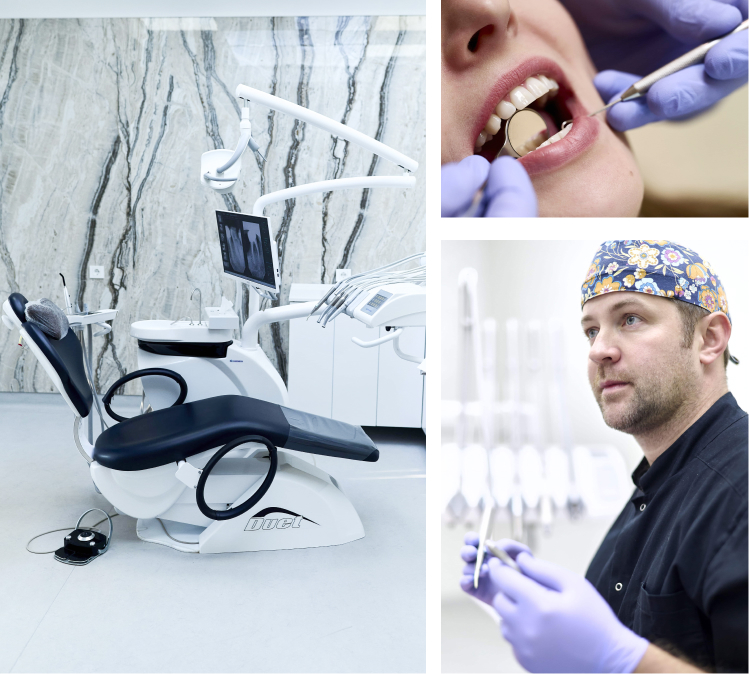
Surgical lengthening of the crown part of the tooth - correction of a gum smile.
"Gum smile" - the crowns of the teeth look too short, which is why most of the gums are visible when smiling. Many people do not like it, so they have to go to a surgeon to lengthen the crown part. With the help of surgical lengthening, an ideal ratio of gums and dentition is created.
Modern specialists, thanks to anesthetics, are able to perform even a surgical operation painlessly. Only healthy tissues are suitable for the procedures, otherwise, all diseases must be cured. At the first stage, your task is to undergo an examination by a doctor who gives permission or, on the contrary, prohibits the procedures.
If you need to lengthen one tooth, the doctor performs a gingivotomy. Next, the bone tissue is exposed, after which a new contour is created. The dentist determines the connective tissue and biological width (should be 2-3 millimeters) during the operation.
Important! The doctor resects the bone tissue in the area of the tooth and then fixes the flap with sutures. Due to the high risk of the gum returning to its original state, resection is mandatory. The operation can be performed to restore the gum contour of not only one or more teeth, but also the entire dentition. The patient can remove the sutures after 3-5 days from the time of the operation. A special rinse is prescribed to strengthen the teeth and a beautiful smile. If you are sure that you need a surgeon's intervention, make an appointment for a consultation. Our dentist will consult you and then confirm or refute your concerns. You will be provided with a treatment plan and a list of medications with their current prices.

Our doctors
Make an appointment!
We will call you back as soon as possible to clarify the details of the appointment. If you have any questions, our manager will answer them

